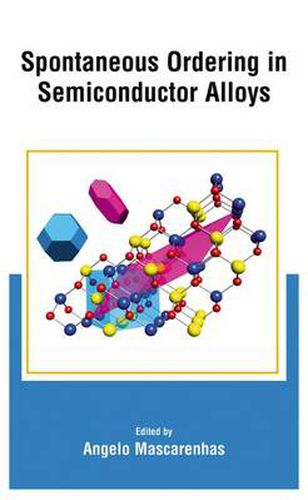Readings Newsletter
Become a Readings Member to make your shopping experience even easier.
Sign in or sign up for free!
You’re not far away from qualifying for FREE standard shipping within Australia
You’ve qualified for FREE standard shipping within Australia
The cart is loading…






This book presents a comprehensive account of the phenomenon of spontaneous ordering. The phenomenon, which can be categorized as a self-organized process, is observed to occur spontaneously during epitaxial growth of certain ternary alloy semiconductors and results in a modification of their structural, electronic, and optical properties. There has been a great deal of interest in learning how to control this phenomenon so that it may be used for tailoring desirable electronic and optical properties. There has been even greater interest in exploiting the phenomenon for its unique ability to provide an experimental environment of controlled alloy statistical fluctuations. As such, it impacts areas of semiconductor science and technology related to the materials science of epitaxial growth, statistical mechanics, and electronic structure of alloys and electronic and photonic devices. Significant progress has been made toward understanding the mechanisms that drive this phenomenon and the changes in physical properties that result from it; a variety of experimental techniques have been used to probe the phenomenon and several attempts made at providing theoretical models, both for the ordering mechanisms as well as electronic structure changes. The various chapters of this book provide a detailed account of these efforts during the 1990s and beyond.
$9.00 standard shipping within Australia
FREE standard shipping within Australia for orders over $100.00
Express & International shipping calculated at checkout
This book presents a comprehensive account of the phenomenon of spontaneous ordering. The phenomenon, which can be categorized as a self-organized process, is observed to occur spontaneously during epitaxial growth of certain ternary alloy semiconductors and results in a modification of their structural, electronic, and optical properties. There has been a great deal of interest in learning how to control this phenomenon so that it may be used for tailoring desirable electronic and optical properties. There has been even greater interest in exploiting the phenomenon for its unique ability to provide an experimental environment of controlled alloy statistical fluctuations. As such, it impacts areas of semiconductor science and technology related to the materials science of epitaxial growth, statistical mechanics, and electronic structure of alloys and electronic and photonic devices. Significant progress has been made toward understanding the mechanisms that drive this phenomenon and the changes in physical properties that result from it; a variety of experimental techniques have been used to probe the phenomenon and several attempts made at providing theoretical models, both for the ordering mechanisms as well as electronic structure changes. The various chapters of this book provide a detailed account of these efforts during the 1990s and beyond.